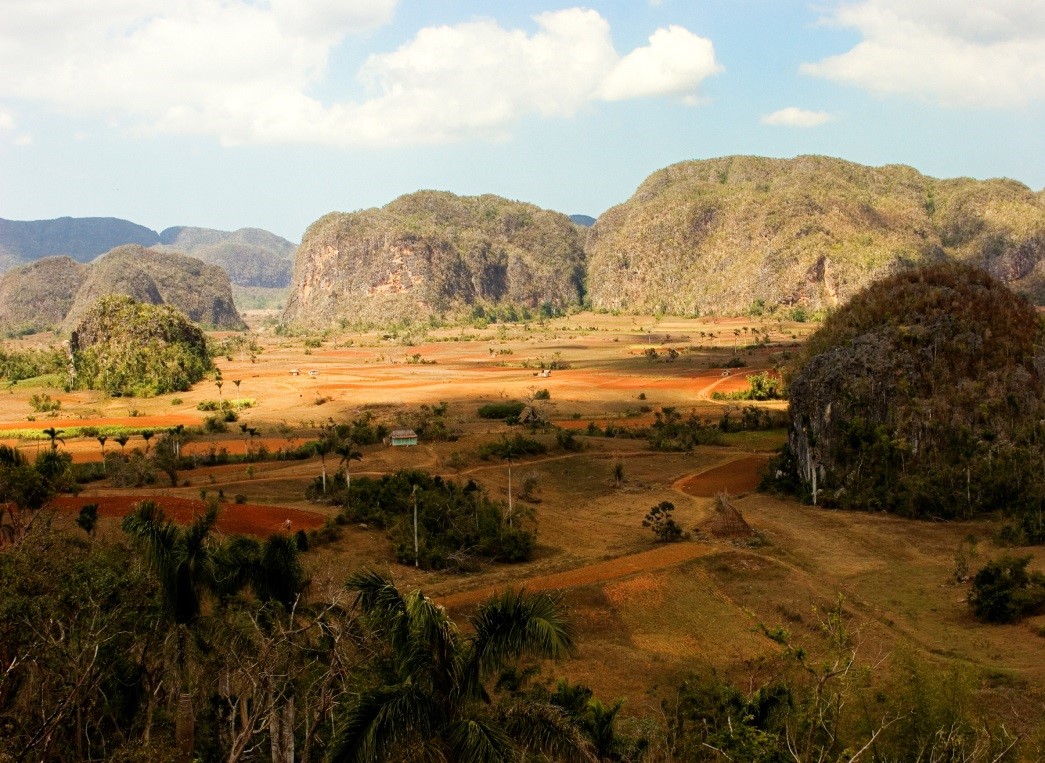
Miembros del Grupo Coordinador de la iniciativa BIOFIN-CUBA y del Centro Nacional de Áreas Protegidas (CNAP) estudian mecanismos financieros con potencialidades para ser propuestos e implementar a nivel piloto en el Sistema Nacional de Áreas Protegidas, siguiendo la metodología BIOFIN y el catálogo de mecanismos financieros.
En el mes de noviembre fue visitada la Unidad Presupuestada de Servicios Ambientales "Alejandro de Humboldt" en la provincia de Guantánamo, perteneciente al Ministerio de Ciencia, Tecnología y Medio Ambiente (CITMA), desde donde se administra el Parque Nacional "Alejandro de Humboldt".
De igual modo se realizó una visita al Área Protegida de Recursos Manejados Península de Zapata que se gestiona por una Junta de Administración presidida por la Asamblea Municipal Poder Popular Ciénaga de Zapata e integrada por los Ministerios de: Ciencia, Tecnología y Medio Ambiente, Agricultura y Turismo. Dentro de ella se localizan cuatro áreas protegidas de categoría más estricta. Tres de ellas son de significación nacional (Parque Nacional Ciénaga de Zapata, Elemento Natural Destacado Sistema Espeleolacustre de Zapata y Refugio de Fauna Bermejas) y una de trascendencia local (Refugio de Fauna Canales del Hanábana), todas gestionadas por la Organización Superior de Dirección Empresarial de Flora y Fauna.
Además, en el mes de diciembre se seleccionaron tres sitios en la provincia de Pinar del Río, en dónde también se logró intercambio. En primer lugar, el Parque Nacional Viñales administrado por el Centro de Servicios Ambientales de la provincia perteneciente al Ministerio de Ciencia, Tecnología y Medio Ambiente. En segundo lugar, las Áreas Protegidas de Recursos Manejados Península de Guanahacabibes, gestionada de forma coordinada a través de una Junta de Administración presidida por la Oficina para el Desarrollo de la Península de Guanahacabibes e integrada por el Ministerio de Ciencia, Tecnología y Medio Ambiente y por el Ministerio de la Agricultura. Finalmente, la Sierra del Rosario también fue seleccionada, la cual estáesta última localizada territorialmente en la provincia de Artemisa y se dirige de forma coordinada mediante una Junta de Administración presidida por el Ministerio de Ciencia, Tecnología y Medio Ambiente e integrada por los Ministerios de Turismo y de Agricultura y de las Fuerzas Armadas Revolucionarias.
Durante las sesiones de trabajo y visitas de campo, se analizó, debatió y actualizó la información y el trabajo que se desarrolla sobre servicios ambientales en las áreas protegidas seleccionadas. Los intercambios con directivos y trabajadores permitieron también conocer in situ el funcionamiento de la gestión económica-financiera de cada zona. Además, se presentó la iniciativa BIOFIN, la cual promueve una asistencia técnica que correlaciona la economía y las finanzas con la protección y la gestión sostenible de la biodiversidad.
Como resultado de la información recopilada y sustentada en la iniciativa BIOFIN, serán sugeridos mecanismos financieros para que sean aplicados en éstas áreas protegidas seleccionadas, como sitio piloto donde se implementará la propuesta y la metodología acordada.
____________________________________________________________________________________________
Experts values the implementation of financial mechanisms in various Cuban protected areas as part of the BIOFIN Initiative.
Members of the Coordinating Group of the BIOFIN-CUBA initiative and the National Centere for Protected Areas (CNAP), study potential financial mechanisms with potential to be proposed and implemented at the pilot level in the National System of Protected Areas, following the BIOFIN methodology and the catalogue of financial mechanisms.
In November, a visit was made to the Budget Unit of Environmental Services "Alejandro de Humboldt" in Guantánamo Province, belonging to the Ministry of Science, Technology and Environment (CITMA), from where the "Alejandro de Humboldt" National Park is administered.
Likewise, a visit was made to the Managed Protected Area of Península de Zapata, which is administered by a Board of Directors, chaired by the Municipal Assembly of the Ciénaga de Zapata Popular Power and integrated by the Ministries of Science, Technology and the Environment, Agriculture and Tourism. Within it there are four protected areas. Three of them are of national significance (Ciénaga de Zapata National Park, Outstanding Natural Element Zapata Especholacustre System and Bermejas Wildlife Refuge) and one of local importance (Refuge of Fauna Channels of the Hanábana ), all managed by the Superior Organization of Business Management of Flora and Fauna.
Last December, three sites were also selected in the province of Pinar del Río, where an exchange was also achieved. Firstly, the Viñales National Park, which is administered by the Center for Environmental Services of the province belonging to the Ministry of Science, Technology and Environment, and secondly the Areas Protected from Managed Resources Peninsula of Guanahacabibes, managed in a coordinated manner through a Board of Directors chaired by the Office for the Development of the Peninsula of Guanahacabibes and integrated by the Ministry of Science, Technology and Environment and by the Ministry of Agriculture. Finally, the Sierra del Rosario, located in the province of Artemisa and it is coordinated in a harmonized manner through a Board of Directors chaired by the Ministry of Science, Technology and Environment and integrated by the Ministries of Tourism, Agriculture and the Revolutionary Armed Forces.
During the work sessions and field visits, the information and work developed on environmental services in the selected protected areas was analyzed, discussed and updated. The exchanges with managers and workers also allowed a better understanding of the functioning of the financial management of each zone. In addition, the BIOFIN initiative was presented to all stakeholders raising awareness about the programme.
As a result of the information gathered and supported by the BIOFIN initiative, financial mechanisms will be suggested to be applied in selected protected areas as a pilot.
Categories
Archives
- April 2024 (4)
- March 2024 (3)
- February 2024 (6)
- January 2024 (3)
- December 2023 (1)
- November 2023 (7)
- October 2023 (5)
- September 2023 (2)
- August 2023 (3)
- July 2023 (1)